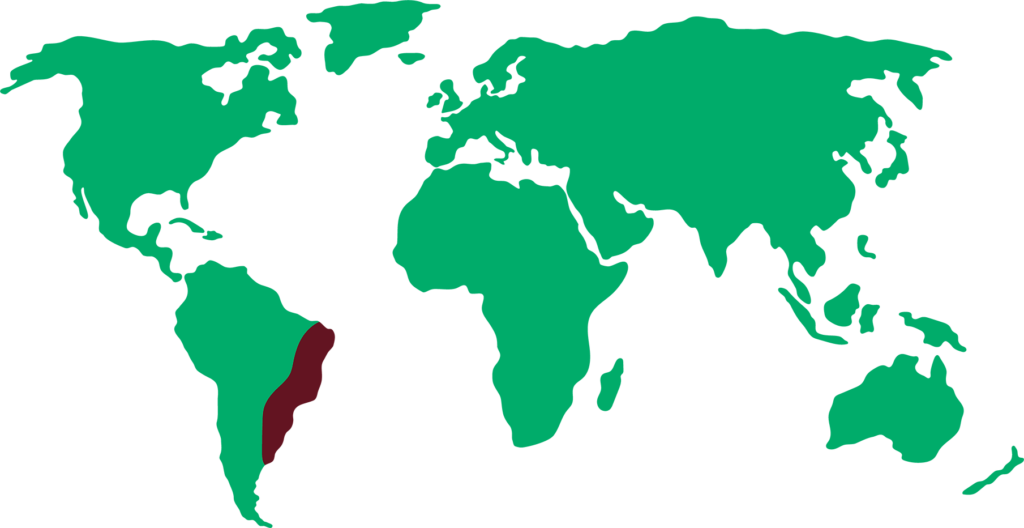BROAD-SNOUTED CAIMAN
Caiman latirostris

LENGTH

3,5 m
WEIGHT

65 kg
LIFESPAN

30 years
The broad-snouted caiman is a species of crocodile endemic to South America. It is found mostly in freshwater marshes, usually in still or very slow-moving waters.
General characteristics
Adults are generally between 2 and 3 metres, no more than 3.5 metres long, and weigh between 40-65kg, with females being noticeably smaller.
They have a robust body and the most notable physical characteristic is the short but broad muzzle from which they derive their name. Their skin is light olive green and pale grey with black spots on the back and sides, while the belly is light yellow.
Feeding
Its diet consists of small invertebrates, mammals and reptiles. It can crush shells to feed on turtles, snails and crustaceans.
Behaviour
Broad-snouted caimans are solitary and territorial animals, and can be aggressive if they feel threatened. Males establish breeding territories and defend their area from other caiman species and predators.
They are semi-aquatic animals and spend much of their time in the water, where they are good swimmers and can remain submerged for several minutes.
They are ectothermic, which means that they depend on the external environment to regulate their body temperature.
Reproduction
Female lay between 20 and 60 eggs in the nest and the incubation period is approximately 90 days. The nests are made of mud and plant parts and are usually built on small islands in the middle of the water.
Like all caimans, the sex of the hatchlings depends on the incubation temperature. Thus, the nests have two layers, with a slight temperature difference between the two, to give a more even ratio of male to female offsprings.
Threats
The broad-snouted caiman is impacted by habitat loss, pollution, illegal hunting (in some Brazilian states where the population is low) and the construction of large hydroelectric dams.
Habitat destruction has increased considerably in recent years. The strong expansion of agricultural frontiers has created proximity with areas of the caiman’s distribution.
Distribution
They are found in South America, mainly in Argentina, Bolivia, Brazil, Paraguay and Uruguay.
They mainly inhabit marshes, swamps and calm freshwater mangroves, and prefer areas with intense vegetation and a tropical climate.

Did you know?
The skin of the caiman is highly prized for its smooth texture.
The offsprings have a high natural mortality rate. They are preyed upon by birds of prey.
Their snout is adapted to tear through dense vegetation.
Conservation status
